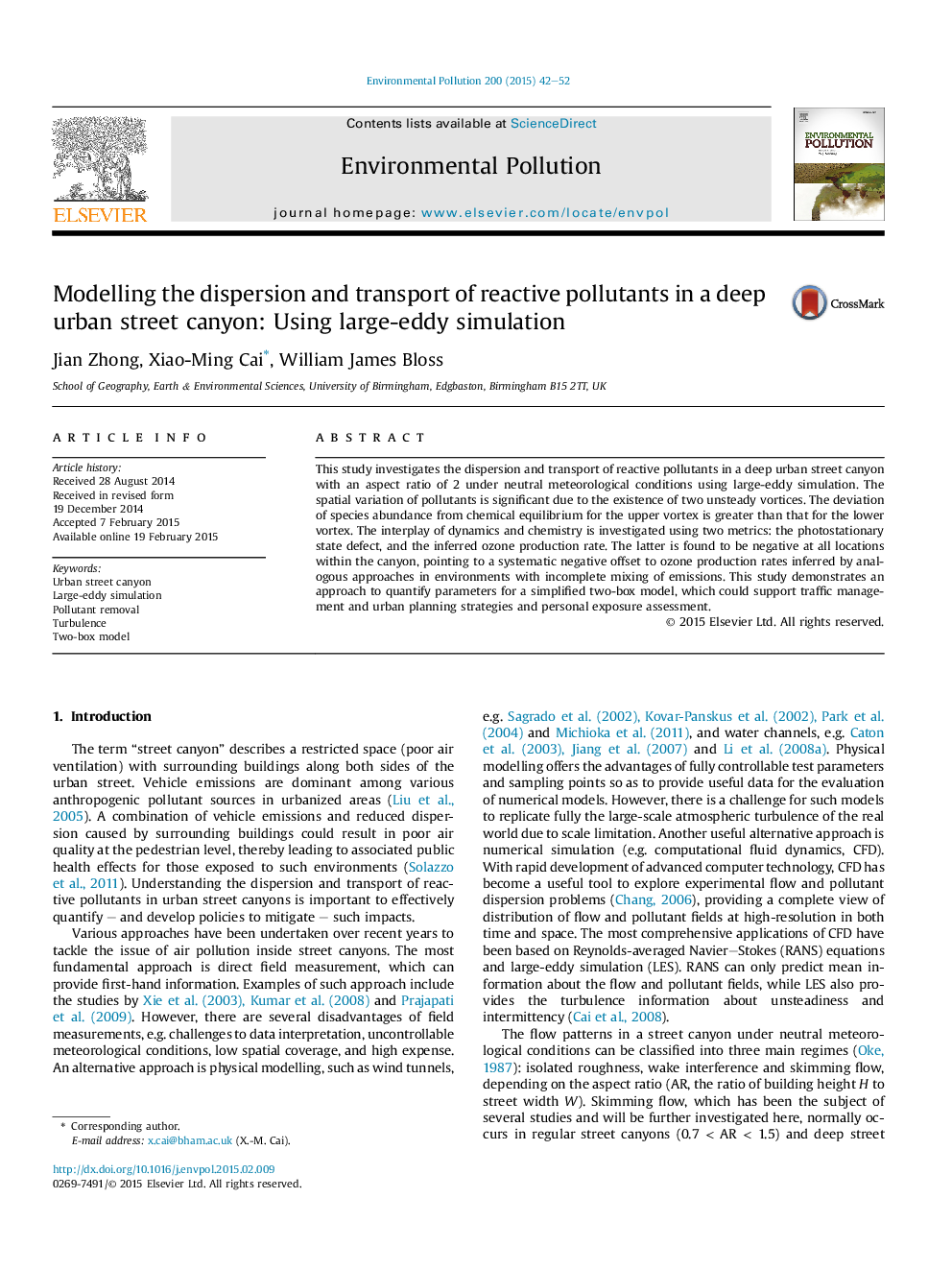| Article ID | Journal | Published Year | Pages | File Type |
|---|---|---|---|---|
| 4424289 | Environmental Pollution | 2015 | 11 Pages |
•Large-eddy simulation reproduces two unsteady vortices seen in a lab experiment.•Reactive pollutants in an urban street canyon exhibit significant spatial variation.•O3 production rate inferred by the NOx-O3-steady-state-defect approach is discussed.•Ground level sourced pollutants are largely trapped within the lower vortex.•A method of quantifying parameters of a two-box model is developed.
This study investigates the dispersion and transport of reactive pollutants in a deep urban street canyon with an aspect ratio of 2 under neutral meteorological conditions using large-eddy simulation. The spatial variation of pollutants is significant due to the existence of two unsteady vortices. The deviation of species abundance from chemical equilibrium for the upper vortex is greater than that for the lower vortex. The interplay of dynamics and chemistry is investigated using two metrics: the photostationary state defect, and the inferred ozone production rate. The latter is found to be negative at all locations within the canyon, pointing to a systematic negative offset to ozone production rates inferred by analogous approaches in environments with incomplete mixing of emissions. This study demonstrates an approach to quantify parameters for a simplified two-box model, which could support traffic management and urban planning strategies and personal exposure assessment.
